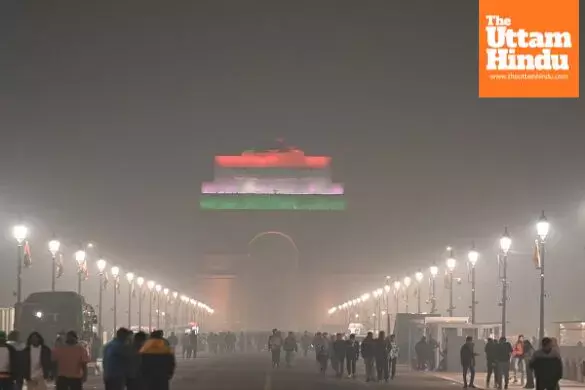Delhi’s pollution reaches alarming levels; AQI crosses 300, GRAP-1 restrictions imposed

New Delhi (The Uttam Hindu) – In response to the rapidly deteriorating air quality in the capital Delhi and the National Capital Region (NCR), the Commission for Air Quality Management (CAQM) has taken a major step. The Commission has ordered the implementation of the Graded Response Action Plan (GRAP-1) with immediate effect.
On Sunday, Delhi's Air Quality Index (AQI) was recorded at 211, which falls in the 'poor' category. According to the Central Pollution Control Board (CPCB), an AQI of zero to 50 is considered 'good', 51 to 100 'satisfactory', 101 to 200 'moderate', 201 to 300 'poor', 301 to 400 'very poor' and 401 to 500 'severe'.
These restrictions will be in place under GRAP-1.
Under GRAP-1, cooking with coal or wood is prohibited in roadside eateries and restaurants. Open burning of garbage or leaves will also be strictly prohibited. To control pollution, monitoring will also be increased at construction sites and industrial units to limit air emissions.
Breathing problems increase, health experts worried
As the winter season approaches, Delhi's air is becoming more toxic. The AQI in many areas has reached between 200 and 300, causing problems like difficulty in breathing, cough, and burning sensation in the eyes. Health experts say that the continuous decline in air quality can prove to be extremely dangerous for the elderly, children and asthma patients.
City covered in smog, visibility affected
A thick layer of smog is being seen in many parts of the capital during morning and evening. Visibility has reduced in major areas like India Gate, Rajpath, and ITO. The air quality is expected to remain in the 'poor' category in the coming days from October 14 to 16. The Meteorological Department and environmental agencies have predicted that if the wind speed remains slow and incidents of stubble burning increase, the pollution level may go into the 'very poor' category.
